Air Conditioning Solutions
“Air conditioning systems are great for temperature - humidity control but unfortunately are the perfect breeding grounds for bacteria & mould to grow”.
Mould needs 3 essential ingredients to grow & survive. These are:
Moisture
Mould spores need moist or damp areas to grow and reproduce (example: Air conditioning evaporator coil)
Food
Mould spores need food. Example being: dirt, dust, cotton, leather, wood, paper products etc (all of which are returned back to the evaporator coil in an air conditioning system when it’s operational). The most dangerous materials mould loves to grow on are porous materials.
Optimum Temperatures
Mould spores thrive in temperatures 0 and 49 degrees Celsius (example: Air conditioning evaporator coil).
What does an air conditioning unit do?
You might think of your air conditioner as adding cool air to your home, but it’s more accurate to say that your AC unit subtracts heat from indoor air and transfers it outside. That transfer takes place in the evaporator coils on the interior half of your air conditioning system. As the coolant inside the metal coils (refrigerant) evaporates, it acts as a heat sink for the air that moves across it from the blower. Copper conducts heat readily, so the coils that contain the coolant are usually made of this metal. To maximize surface area and provide more cooling power, the copper coils have metal fins or vanes surrounding them. Keeping the coils clean is vital to proper heat exchange. When dust and debris collect on coils, the particles form an insulating layer that prevents warm household air from the blower from reaching the chilled metal.
So, it’s safe to say that the principal of air conditioning, like refrigeration “is the removal of heat”
What does every basic service of an air conditioning system entail?
When carrying out a service on any type of air conditioning system, the return air filter/s should always be removed and cleaned. The primary function of a return air filter is to collect air borne dirt/dust that is present within the room before this air passes through the evaporator coil.
Here are 2 examples of where the return air filters are located:
Picture 1 shows what the return air filter looks like and where they are located for a wall mounted split air conditioning system: 
Picture 2 shows what a return air grille looks like for a central ducted system. 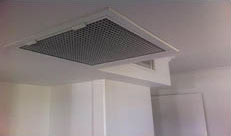
Picture 3 shows when you open this grille; the filter is normally part of the assembly (either slide in/out, clips in/out): 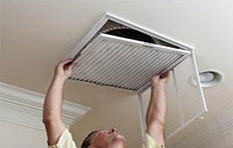
After the filters have been cleaned, they are placed back into their original position.
Standard return air filters will not collect 100% of air borne dirt/dust. Over time, these items build up a coating on the evaporator coil and also on the evaporator fan wheel.
Picture 4 shows the difference between a “clean coil” and a coil that has had dirt / dust build up over approximately 3 years in a ducted system. Notice the right hand side, that’s Mould!!! 
Picture 5 shows the difference between a “clean fan wheel” and a fan wheel that has had dirt / dust build up over approximately 3 years. Notice the right hand side, again, that’s Mould!!!

There are many different ways to clean an air conditioning system from totally removing the indoor unit from the wall to cleaning it whilst in position.
Picture 6 shows how a wall mounted split system is cleaned whilst in position: 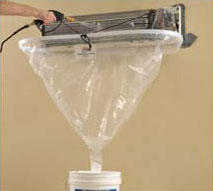
How can 'Clean Fresh Air' be used in an air conditioning application?
After the dirt/dust from the return air filter has been removed, simply apply a minimal amount of 'Clean Fresh Air' Liquid Spray to the filter material before reinstalling the filters.
Our liquid spray sanitises the filter material and ensures that any bacteria / fungi (mould) that has been growing will be eradicated.
Our liquid spray can also be applied to the evaporator coil & evaporator fan wheel as well.
Similar to the filters, the amount of liquid spray applied only has to be minimal. This ensures that any
mould/bacteria that has been growing on these items will be eradicated.
Introducing 'Clean Fresh Air' Evaporative through an air conditioning system:
The main objective is to position the correct size container as close to the evaporator coil as possible. Again, for the purpose of this exercise we will use the wall mounted split system and central ducted type air conditioning units as the examples.
In a wall mounted split system application, we simply place the opened container of our evaporative product on top of the indoor unit. As the product is evaporating, it is being captured by the air within the room returning to the evaporator coil.
Picture 7 shows where to position 'Clean Fresh Air' evaporative in a wall mounted split system application: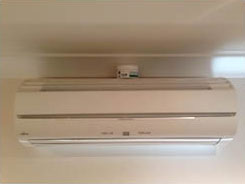
In a ducted system, we simply unhinge the return air grille & place the opened container of 'Clean Fresh Air' in the return air duct.
Picture 8 and 9 shows where to position 'Clean Fresh Air' Evaporative in a ducted system application:
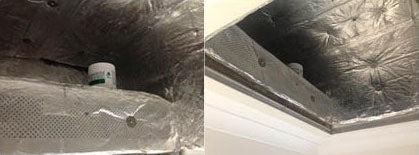
In every case, the vapour from the product mixed with the room’s air is then drawn through the evaporator coil, then passes through the fan wheel. By positioning the containers of 'Clean Fresh Air' Evaporative, we are eradicating everything within the indoor a/c unit. The product is also being rapidly circulated throughout the room at a higher rate than normal. The end result is clean fresh air naturally!!
We are often asked “What makes 'Clean Fresh Air' different to other products?” Our answer is “We challenged the status quo by making our products conveniently packaged, simple to use and user friendly. We make a great product that kills and stops the growth of mould, bacteria & fungi and best of all it is 100% natural.”
